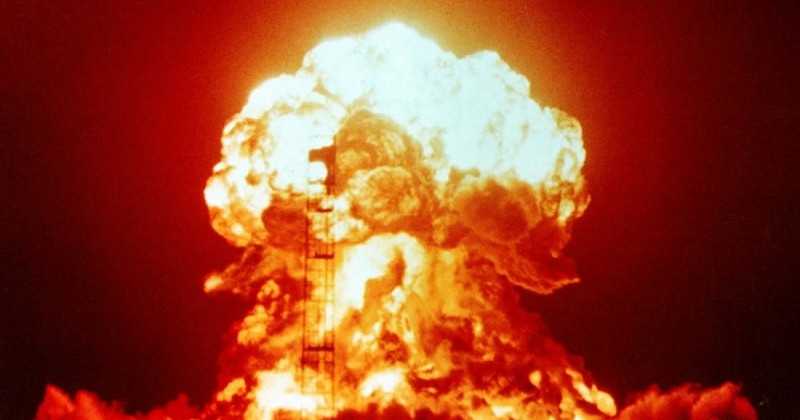Atomophobia (fear of a nuclear explosion): symptoms, causes, treatment

A type of phobia in which the unlikely situation of a nuclear explosion is frightening.
Atomophobia is a clear example that human beings can develop extreme fears of very improbable phenomena. This mental disorder is based on the fear of atomic explosions, something that the vast majority of the population has never experienced and will never experience.
Let us see what the symptoms and causes of atomophobia areas well as the possible psychological treatments associated with this disorder.
What is atomosophobia?
The atomosofobia, or phobia to nuclear explosions, is a type of anxiety disorder belonging to the group of specific phobias.
In it, what produces an intense fear is the intense fear is the expectation that a nuclear explosion will occur. in a nearby place. This means that the symptoms of the disorder do not manifest themselves only if one attends one of these explosions, but can appear in practically any context, as long as the intrusive ideas related to this kind of catastrophes become the focus of the person's attention.
It is necessary to bear in mind that phobias are disorders because in them there is a fear to something that should not be feared with that intensity, since it does not suppose a danger.because it does not represent a danger. In the case of nuclear explosions, it is clear that they are dangerous, but in this case the problem is a question of probability: what should not be feared is the risk of an imminent and nearby nuclear explosion, since it is most likely that it will not occur.
Causes
As with the rest of the phobias, there is no specific and unique cause that is the same in all cases, but rather there are a variety of situations that can lead to the development of these disorders and cause their symptoms to persist.
Exposure to a traumatic experience related to real or imagined nuclear explosions is one of the causes. This association between the experience and an emotional state of strong anxiety can be realized in the most elaborate ways.
For example, by closely experiencing the collapse of a house, which resembles the explosion of a bomb, or by seeing someone dear to you die of cancer, in which case the most anxiogenic element of the nuclear explosion would be the radiation it would leave in its wake.
It is necessary to bear in mind that phobias are based on fear and anxiety mechanics that in most cases are in most cases are useful for survival.but which in certain cases can degenerate and give way to psychopathology.
This means that these anxiety disorders are not something that can be controlled through rationality, but that they start from the emotional facet that has been at the core of the functioning of the nervous system for millions of years and without whose existence we could not understand the human mind.
Symptoms
As far as symptoms are concerned, these are the usual ones in any type of phobia, and all of them have to do with a strong anxiety response to a real or imagined stimulus.
On the one hand, there are the physiological symptoms.. These are increased Blood Pressure and respiratory rate, tremors, cold sweats, nausea and the possibility of losing consciousness.
On the other hand, there is the psychological component, in which obsessive ideas based on the image of the nuclear explosion stand out. the impossibility of directing attention to anything else during the crisis, as well as the feeling of fear. the crisis, as well as the sensation of fear.
Finally we have the purely behavioral part, in which the behaviors of flight and avoidance of the phobic stimulus stand out.
Treatment
Fortunately, phobias have a good prognosis, phobias have a good prognosis if they are treated with the help of psychology professionals.
In this sense, the most common techniques for treating this type of disorder, which includes atomophobia, are systematic desensitization and exposure. Both are based on the idea of exposing the person to the phobic stimulus in a controlled situation, under the supervision of the psychotherapist, and going from the easiest situations to the most difficult.
In the case of atomophobia, since it is not possible to encounter the phobic stimulus in real life, the most useful thing to do is to to take advantage of forms of virtual reality based on a three-dimensional graphic engine.
On the other hand, psychological interventions that appeal to the cognitive component and mental schemas can be used in parallel. Cognitive restructuring is used for this purpose, linked in this case to the improvement of self-esteem and self-efficacy.
Bibliographical references:
- Cavallo, V. (1998). International Handbook of Cognitive and Behavioural Treatments for Psychological Disorders. Pergamon.
- Myers, K. M., Davis, M.(2007). "Mechanisms of fear extinction". Molecular Psychiatry. 12 (2): pp. 120 - 150.
(Updated at Apr 13 / 2024)